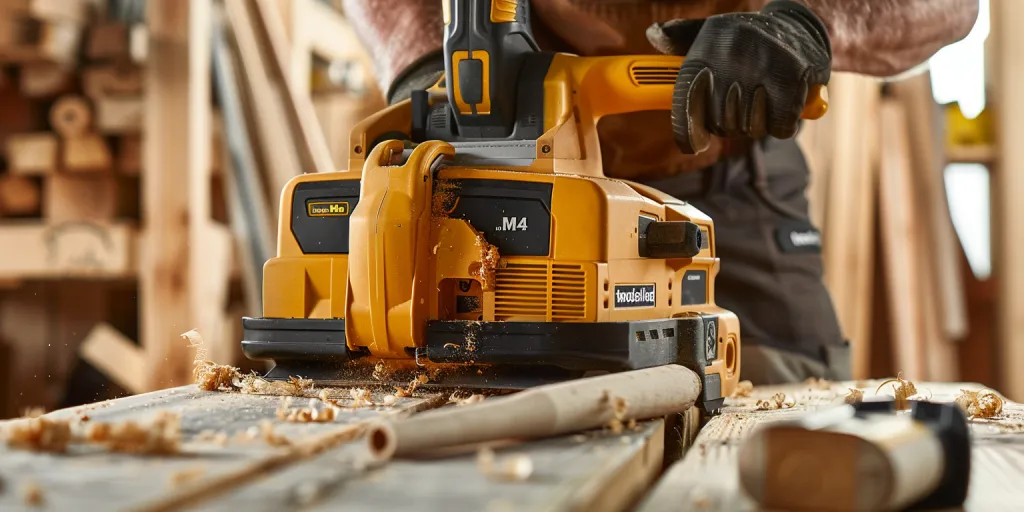Woodworking is an art and a science, requiring precision, patience, and the right tools. Among these, wood planers hold a pivotal role, shaping raw lumber into pieces of exact thickness and smoothness. This article delves into the essential aspects of wood planers, guiding both novices and seasoned woodworkers through their functionalities, types, benefits, selection tips, and maintenance practices. Understanding these facets will not only enhance your woodworking projects but also extend the life and efficiency of your tools.
Table of Contents:
– Understanding wood planers and their importance
– Different types of wood planers and their applications
– Key features to consider when choosing a wood planer
– The benefits of using a wood planer in woodworking projects
– Maintenance tips for extending the life of your wood planer
Understanding wood planers and their importance

Wood planers are indispensable in woodworking for several reasons. Firstly, they allow for precise control over the thickness of the wood, which is crucial for projects that require uniformity. This precision ensures that pieces fit together perfectly, without gaps or misalignments. Secondly, planers can remove imperfections from the wood’s surface, such as knots or rough patches, resulting in a smooth, professional finish. Lastly, the ability to customize the thickness of wood pieces can lead to significant cost savings, as woodworkers can purchase cheaper, rough-sawn lumber and mill it themselves to the desired thickness.
Different types of wood planers and their applications

There are several types of wood planers available, each suited to different tasks and scales of woodworking projects. Handheld planers are portable and versatile, ideal for small projects or on-site adjustments. Benchtop planers, on the other hand, offer more power and stability for medium-sized projects. They are a popular choice among hobbyists and small workshops. For large-scale operations or professional woodworking shops, stationary or industrial planers provide the highest capacity and precision. Understanding the specific applications and limitations of each type can help woodworkers select the most appropriate tool for their projects.
Key features to consider when choosing a wood planer

When selecting a wood planer, several key features should be considered to ensure it meets your project’s needs. The maximum width and depth of cut are critical specifications, as they determine the size of lumber the planer can accommodate. Another important consideration is the planer’s power and speed, which affect its efficiency and the quality of the finish. Additionally, features such as dust collection systems can significantly ease cleanup and maintain a healthier work environment. Lastly, the durability and reliability of the planer are paramount, as they impact the tool’s lifespan and performance.
The benefits of using a wood planer in woodworking projects

Incorporating a wood planer into your woodworking projects offers numerous benefits. It enables greater creativity and flexibility, as woodworkers can customize lumber to their exact specifications. This capability can expand the range of projects you can undertake, from intricate furniture to custom cabinetry. Additionally, the precision and smooth finish achieved with a planer enhance the overall quality and appearance of your projects, setting your work apart. Moreover, the efficiency and time savings provided by a wood planer can increase productivity, allowing you to complete projects faster and with less effort.
Maintenance tips for extending the life of your wood planer

Proper maintenance is crucial for keeping your wood planer in optimal condition and extending its lifespan. Regularly cleaning the planer, especially the blades and the feed mechanism, prevents build-up that can affect performance. Sharpening the blades periodically ensures they cut efficiently and produce a smooth finish. It’s also important to check for wear and tear on the belts and replace them as needed. Additionally, lubricating moving parts can prevent rust and corrosion, ensuring smooth operation. By following these maintenance practices, woodworkers can ensure their planer remains a reliable and valuable tool in their workshop.
Conclusion:
Wood planers are a cornerstone tool in the realm of woodworking, offering precision, efficiency, and versatility. By understanding their importance, types, and applications, as well as considering key features when choosing a planer, woodworkers can significantly enhance the quality and scope of their projects. Moreover, recognizing the benefits of using a wood planer and adhering to proper maintenance practices can extend the tool’s life and ensure its continued performance. With this comprehensive guide, you’re now equipped to select and maintain your wood planer, paving the way for exceptional woodworking projects.




